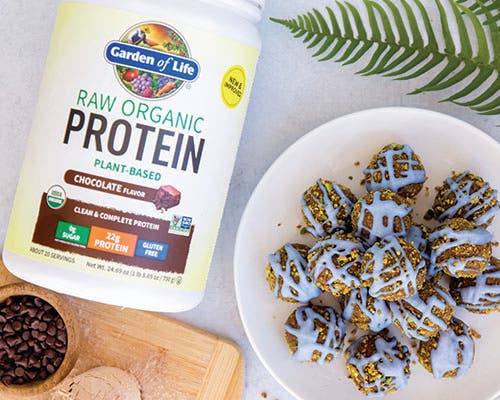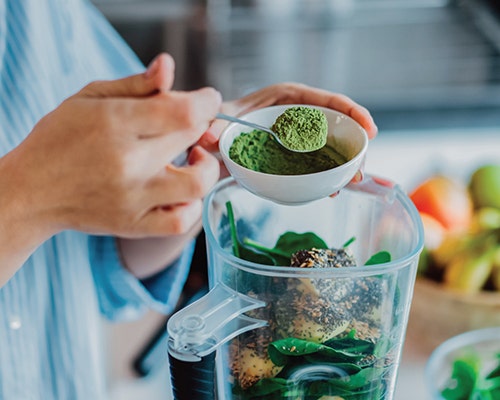How To Lose Fat, Not Muscle
- 1/14/19

by Ashley Grano
The weight loss industry continues to capitalize on encouraging people to “lose weight”, but what this actually means isn’t very clear. For a person with the short-term goal of being able to fit into some old skinny jeans, the number on the scale might be the only priority. However, for true healthy and lasting weight loss, the goal should not be fixated on weight alone, but rather on the type of weight actually being lost. In other words, whether that loss is in the form of fat or muscle is important, says Livestrong.
Muscle versus fat
On a superficial level, one pound of muscle versus one pound of fat weighs the same amount on a scale. However, muscle is denser and therefore is actually heavier with regards to how much “space” it takes up in the body. An inch of muscle is not the same as an inch of fat, for instance.
Muscle is also what helps create toned definition and “shape” throughout the body, reports Livestrong. A contoured and fit figure is often what most people are actually trying to achieve from weight loss, such as toned abs and sculpted thighs.
Further, unlike fat, muscle helps to burn calories and boost metabolism, even when at rest, according to the Mayo Clinic. This helps create lasting weight loss results. For this reason alone, the goal of losing “weight” in general is not desired if it means losing muscle.
People with higher body fat ratios also have an increased risk of health issues, such as hypertension, diabetes, and heart disease, as well as a higher risk of early death. Even people with lower body weight, but a higher fat ratio, have a higher risk of developing other health conditions, says Healthline. Therefore, it is important to try and increase muscle mass and not focus solely on a goal weight “number”.
Exercise to increase muscle mass and lose body fat
In many cases, men and women have varying fitness goals with regards to building up muscle. While most men don’t mind gaining “bulk”, women often want to just be lean. Achieving a healthy balance entails consideration of both specific exercises and diet, says BodyBuilding.com.
While cardio is important for burning fat, excessive cardio can lead to burning muscle instead of fat. Instead, aim for an activity like high-intensity interval training (HIIT). HIIT is a mix of short, high-intensity cardio exercises followed by equal or longer periods of rest, according to Time. Many find this type of cardio to be ideal because it produces great results in less time.
To achieve the ideal combination of gaining muscle while torching fat, strength training is key, says Prevention. To attain the most noticeable results, fitness experts recommend exercises that engage larger muscle groups as well as smaller, accessory muscles. Rows, presses, lunges, and planks are good choices, compared to an exercise like a bicep curl, which only focuses on one individual muscle.
Frequency and intensity of strength training are also important for building muscle. 30 minutes of strength training three times a week is a good rule of thumb for most, suggests Prevention. Either begin with strength training before cardio, or focus solely on strength training on those 3 days, to ensure optimum energy and performance levels.
How diet matters for building muscle
When many people begin a weight loss routine, it’s common to drastically cut calories. However, this practice is counterintuitive when trying to build muscle, as it drains energy and ultimately slows metabolism, says Self health. Further, cutting out all calories (especially proteins) doesn’t leave enough nourishment for muscle repair and growth. Instead, make more mindful and healthy choices, including whole foods that offer plenty of protein, healthy fats, vitamins, and minerals.
For optimum muscle growth, aim to increase protein intake throughout the day. This works to protect muscle tissue from breakdown, suggests Bodybuilding.com. It is also important to reduce excess carbohydrate intake, and make sure that the bulk of carbs consumed comes from high-fiber veggies. The timing of carb consumption is also vital for achieving muscle mass and burning fat. To hit this peak, it is best to consume carbs two hours prior to a workout, and immediately following, says Bodybuilding.com.
Lastly, don’t be afraid of healthy fats, like avocado, fatty fish, flax, and nuts. Some fat is vital for cell structure and hormone levels, which are important for supporting muscle growth.
The weight loss industry continues to capitalize on encouraging people to “lose weight”, but what this actually means isn’t very clear. For a person with the short-term goal of being able to fit into some old skinny jeans, the number on the scale might be the only priority. However, for true healthy and lasting weight loss, the goal should not be fixated on weight alone, but rather on the type of weight actually being lost. In other words, whether that loss is in the form of fat or muscle is important, says Livestrong.
Muscle versus fat
On a superficial level, one pound of muscle versus one pound of fat weighs the same amount on a scale. However, muscle is denser and therefore is actually heavier with regards to how much “space” it takes up in the body. An inch of muscle is not the same as an inch of fat, for instance.
Muscle is also what helps create toned definition and “shape” throughout the body, reports Livestrong. A contoured and fit figure is often what most people are actually trying to achieve from weight loss, such as toned abs and sculpted thighs.
Further, unlike fat, muscle helps to burn calories and boost metabolism, even when at rest, according to the Mayo Clinic. This helps create lasting weight loss results. For this reason alone, the goal of losing “weight” in general is not desired if it means losing muscle.
People with higher body fat ratios also have an increased risk of health issues, such as hypertension, diabetes, and heart disease, as well as a higher risk of early death. Even people with lower body weight, but a higher fat ratio, have a higher risk of developing other health conditions, says Healthline. Therefore, it is important to try and increase muscle mass and not focus solely on a goal weight “number”.
Exercise to increase muscle mass and lose body fat
In many cases, men and women have varying fitness goals with regards to building up muscle. While most men don’t mind gaining “bulk”, women often want to just be lean. Achieving a healthy balance entails consideration of both specific exercises and diet, says BodyBuilding.com.
While cardio is important for burning fat, excessive cardio can lead to burning muscle instead of fat. Instead, aim for an activity like high-intensity interval training (HIIT). HIIT is a mix of short, high-intensity cardio exercises followed by equal or longer periods of rest, according to Time. Many find this type of cardio to be ideal because it produces great results in less time.
To achieve the ideal combination of gaining muscle while torching fat, strength training is key, says Prevention. To attain the most noticeable results, fitness experts recommend exercises that engage larger muscle groups as well as smaller, accessory muscles. Rows, presses, lunges, and planks are good choices, compared to an exercise like a bicep curl, which only focuses on one individual muscle.
Frequency and intensity of strength training are also important for building muscle. 30 minutes of strength training three times a week is a good rule of thumb for most, suggests Prevention. Either begin with strength training before cardio, or focus solely on strength training on those 3 days, to ensure optimum energy and performance levels.
How diet matters for building muscle
When many people begin a weight loss routine, it’s common to drastically cut calories. However, this practice is counterintuitive when trying to build muscle, as it drains energy and ultimately slows metabolism, says Self health. Further, cutting out all calories (especially proteins) doesn’t leave enough nourishment for muscle repair and growth. Instead, make more mindful and healthy choices, including whole foods that offer plenty of protein, healthy fats, vitamins, and minerals.
For optimum muscle growth, aim to increase protein intake throughout the day. This works to protect muscle tissue from breakdown, suggests Bodybuilding.com. It is also important to reduce excess carbohydrate intake, and make sure that the bulk of carbs consumed comes from high-fiber veggies. The timing of carb consumption is also vital for achieving muscle mass and burning fat. To hit this peak, it is best to consume carbs two hours prior to a workout, and immediately following, says Bodybuilding.com.
Lastly, don’t be afraid of healthy fats, like avocado, fatty fish, flax, and nuts. Some fat is vital for cell structure and hormone levels, which are important for supporting muscle growth.




